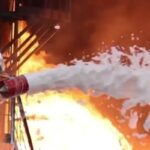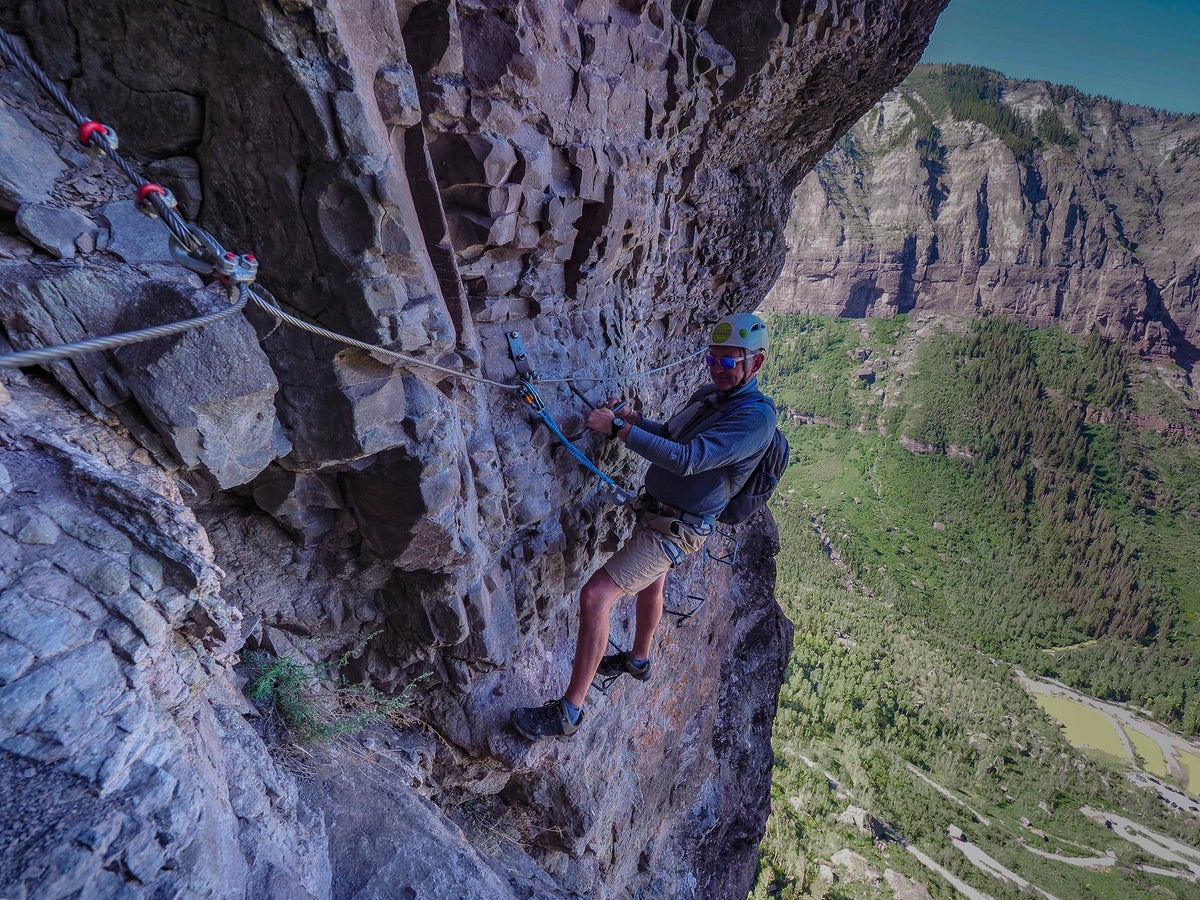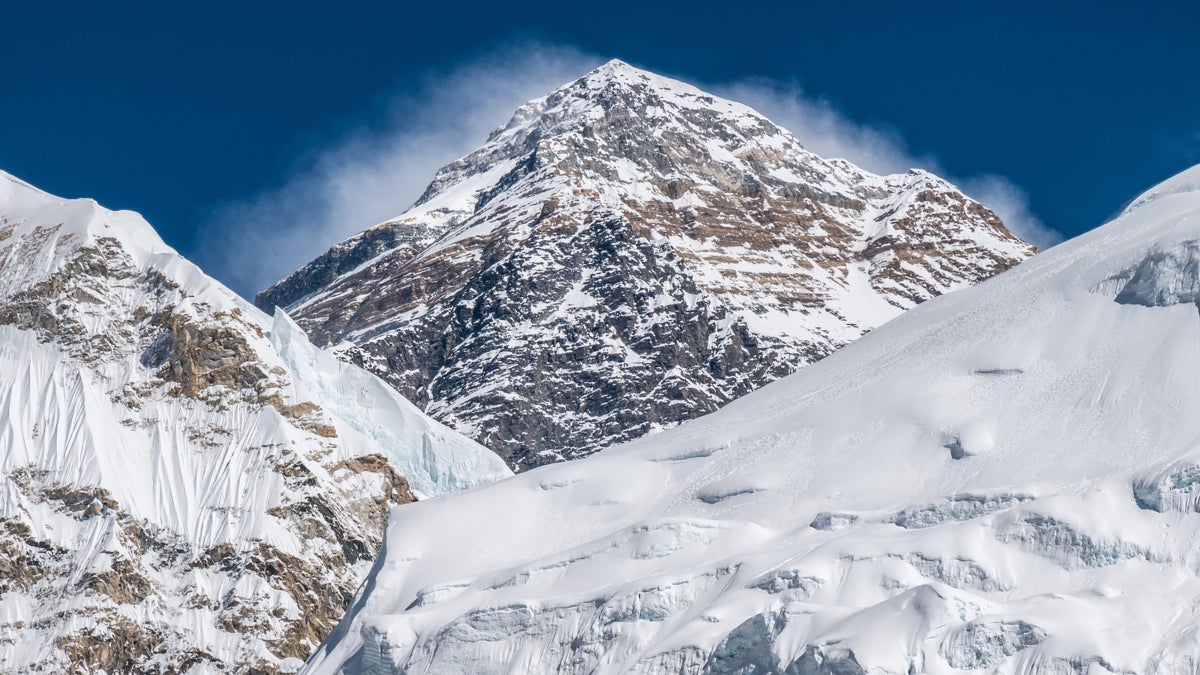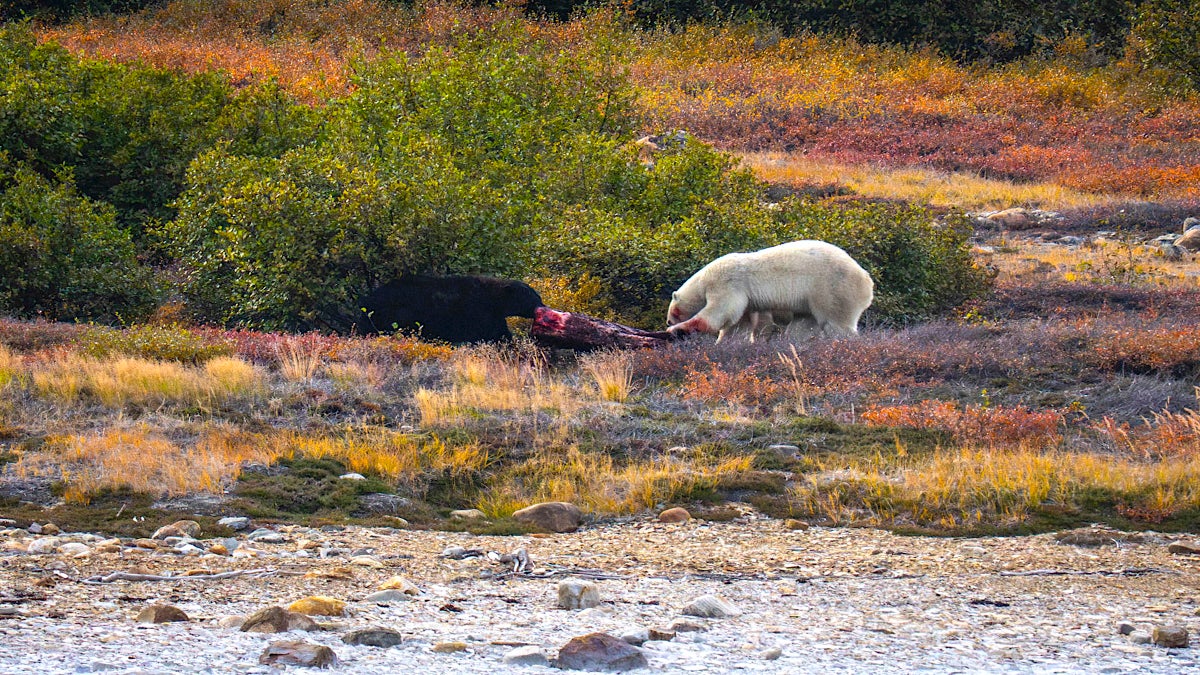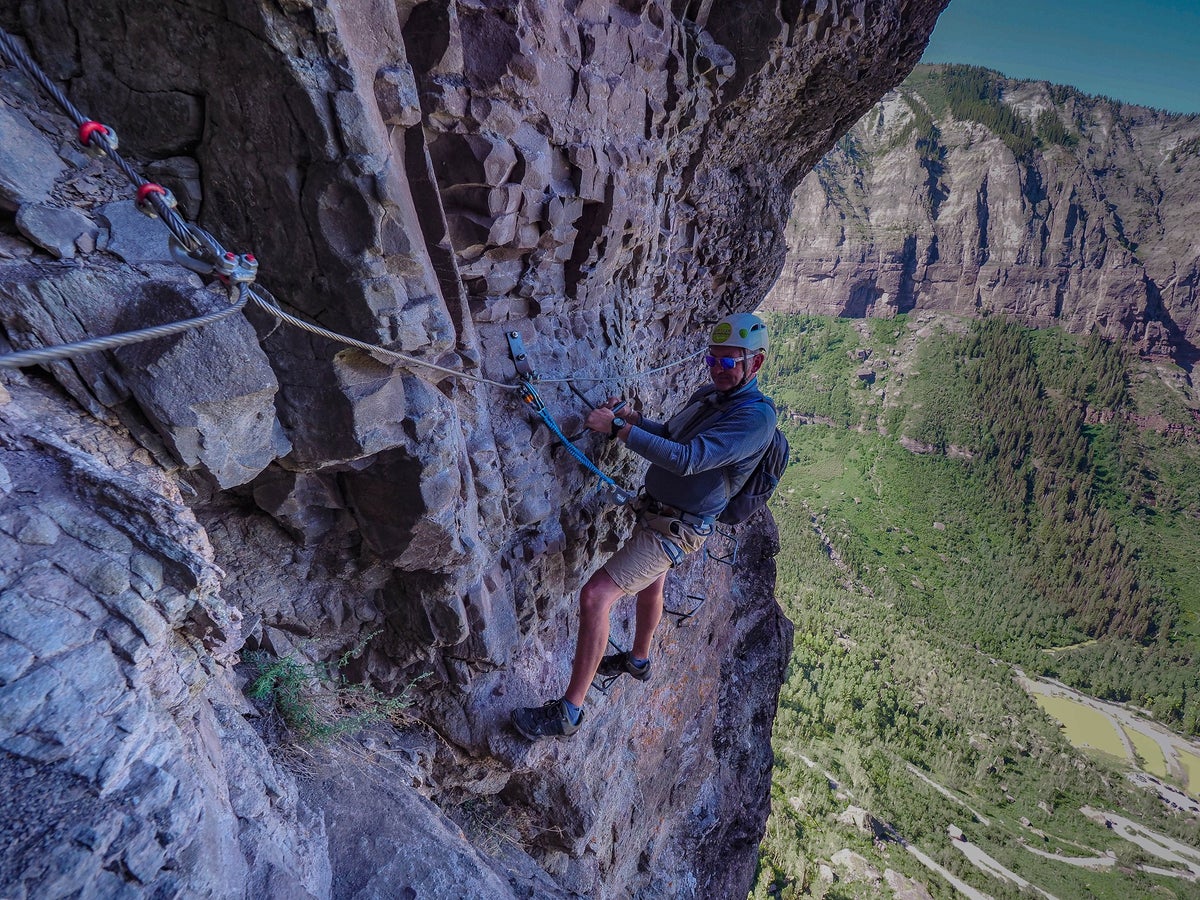
Long popular in Europe, via ferratas are catching on—and fast—in North America. Italian for “iron way,” a via ferrata is a protected climbing route with fixed steel cables, metal rungs, and ladders. As climbers move across the route they are attached to these fixtures via a tether and harness at all times. “They’re a great way to lower the barrier to entry to the vertical realm,” says Todd Ruttledge, president of Telluride Mountain Club, a nonprofit that helps maintain the Telluride Via Ferrata.
I like to think of via ferratas as the e-bikes of the alpine world. They make challenging terrain more accessible, but certainly not effortless. Similar to e-bikes, via ferratas require some basic know-how, fitness, and safety precautions. Compared with other outdoor activities, such as backcountry skiing, rock climbing, or even hiking remote peaks, via ferratas are a fairly low-risk endeavor, says Chris Haaland, a Colorado-based engineer who has designed 17 via ferrata routes in the U.S. including the one at Amangani resort in Utah and at Jackson Hole ski resort.
A review published by the International Climbing and Mountaineering Federation found that the fixed equipment of via ferrata make it “possible to grant almost to everybody the emotion of altitudes and the excitement of vertical walls, without taking major risks and without being involved, possibly, in dangerous situations.”
However, anytime you travel in or through the mountains there are risks. “Safety is an outcome in the mountains, not an assurance,” says Ruttledge. “In the dynamic world of moving in the mountains, rocks fall unexpectedly, people get distracted and forget to clip into a cable, they might make a misstep on the approach to the route.”
The recent via ferrata fatality of 26-year-old climbing guide Olivia Copeland, who was leading a group on Colorado’s popular Mount Blue Sky route, was a reminder that accidents can happen to even experienced climbers. The incident has raised concerns over the safety of via ferrata.
As these routes become increasingly popular in mountain towns such as Ouray, Colorado, Lake Tahoe, California, and even in urban areas, some in the climbing world wonder if they need to have more oversight.
Most Accidents Occur From Human Error
The majority of serious via ferrata incidents occur in the Alps, where the routes are often public and thus unguided. An in-depth analysis of via ferrata accidents in Austria was published in 2021 in the International Journal of Environmental Research and Public Health noted that “falling while climbing unsecured” was the most common cause of death. In addition, “the mortality rate was highest in technically easy-to-climb sections,” indicating that most accidents are a result of complacency.
Even if routes are built to the highest standards, you can’t control human variables, says Kevin Cooney, the vice president of Telluride Mountain Club. “Human error, perhaps caused by a lack of attentiveness and, or distraction is probably the number one cause of accidents in both climbing and via ferrata,” he says.
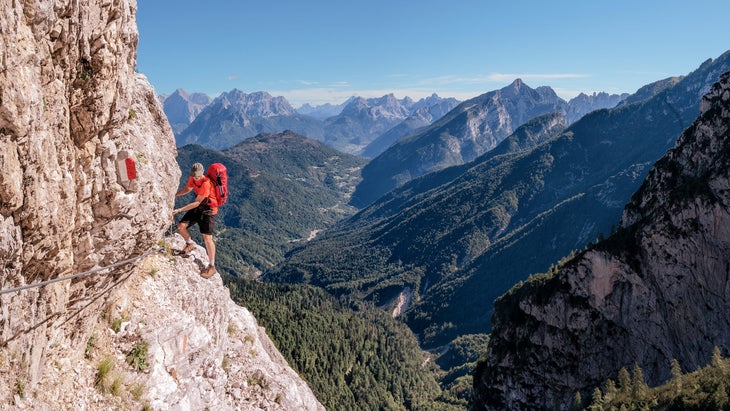
Fatalities are rare on via ferratas in the U.S. Since its completion in 2007, the Telluride via ferrata has had just two deaths, says Rutledge. One was the result of a heart attack suffered by a 74-year-old man. The other occurred in 2021 when a 53-year-old woman unclipped on an exposed section of the course so she could ask a friend to take her pictures, says Rutledge. She slipped and fell 200 feet to her death.
The Mount Blue Sky fatality is currently being investigated by the federal Occupational Safety and Health Administration, but early news reports suggest it happened while the climbing guide was rappelling. “We train in hopes that this never happens,” says AVA’s director, Duke Bradford. “This is a sad reminder that no matter how hard you train, accidents can happen.” This was AVA’s first via ferrata accident.
Are Routes Safer in the U.S. or Europe?
The original via ferratas of Europe come from World War I, when climbing routes were created by the Italian army as a way to traverse jagged peaks in the Dolomite Mountains. Over the decades, these paths were reinforced with metal rungs, and today they’re used for sport. “Many of the routes in Europe are old and rusty and get hammered with the elements—avalanches, rock fall,” says Haaland. Since most are public in Europe and unguided, there are also fewer expert eyes scanning them for repair.
While Telluride’s via ferrata is public, guiding outfits permitted to use the route are trained to look for flaws, such as if a bolt has been loosened or a cable has been hit with rockfall, says Ruttledge. “There are eyes on it pretty much daily and we do one big safety inspection each spring,” he says.
The U.S. has not yet adopted the design and construction standard for via ferratas developed by the European Committee for Standardization, which is used by around 95 percent of via ferratas in the world, including those in Italy and throughout Europe. Instead, the U.S. Forest Service and other land managers abide by a design standard used for aerial adventure courses and amusement park rides. In Colorado, the Colorado Division of Oil and Public Safety’s Amusement Rides and Devices program inspects and certifies commercial routes in the state.
“If anything, this results in courses being overdesigned and extra safe,” says Haaland. European standards for via ferrata construction require a safety factor of 1.5 and in the U.S. the minimum is 5. “That means every anchor you see or use has been designed to withstand up to 9,000 pounds of structural force,” he says. “It should be able to hold a pick-up truck. These structures aren’t going to fail.”
Not All Via Ferrata Routes Are Created Equally
Via ferratas are marketed as a way for every-day travelers to climb mountains. Yet some courses can be significantly physically or technically harder than others. And there can be an added psychological factor for courses that have tremendous exposure, especially if you struggle with heights. Some are much steeper than others, and may not be cabled across their entirety, creating a different type of challenge.
Europe uses a grading system for via ferratas that ranks difficulty similar to climbing routes, which allows users to select an appropriate route for their skill level. Mike Adolph, technical director of the Canadian Association of Mountain Guides says he uses the green/blue/black/double black rating system that is common on ski hills and mountain bike areas for the via ferratas that he constructs. The U.S. is only recently refining its grading system to help people have a clear understanding of what they are getting themselves into. For now, ratings are largely subjective.
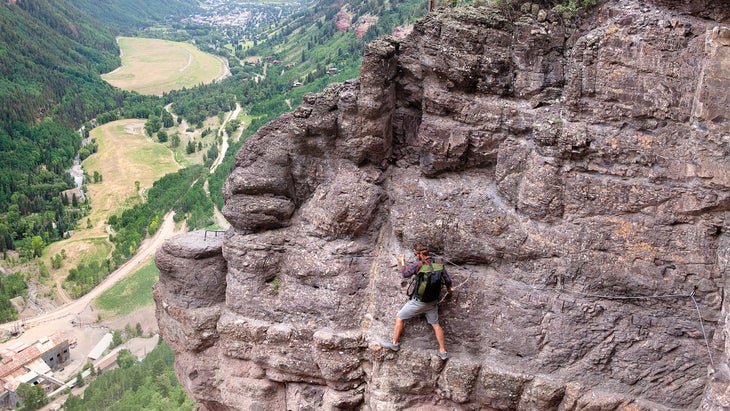
Similar to many routes in Europe, the Telluride via ferrata features uncabled sections that add technical mountaineering elements. Yet it is rated easier than the “Downstream” via ferrata, which is the less technical of the two routes in Ouray, Colorado. “That rating doesn’t account for the 1,000 feet of exposure you have in Telluride,” says Ruttledge, who is also director of Mountain Trip, an outfit that has guided around 8,500 people across the Telluride via ferrata over the last decade.
“If you are used to via ferratas that are cabled end to end, Telluride is an aberration,” he says. “We recently received an email with the subject line, ‘scary as F*%!’ from a woman and it made us realize we needed to change the description of the route to account for people who have only done a via ferrata, in say Kentucky or Ohio.”
AVA’s Mount Blue Sky route was rated a difficulty level of 5 (thrilling and very active) out of 9 (maximum exertion) for climbers aged 12 and up. The company’s website says that previous climbing experience is not required for the course, which includes iron rungs, cables, ziplining, rappelling, and a 50-foot controlled freefall. Santilli notes that the course must be guided and two professional guides, a lead and tail guide, escort groups of 8 or fewer people.
Traditional via ferratas were a way to facilitate movement through the mountains. Guides including Adolph and Rutledge, argue that recreational routes under the via ferrata umbrella should be climbing only and avoid features such as zip lines or rappelling sections.
Logan Talbott, an American Mountain Guides Association (AMGA) / International Federation of Mountain Guides Association (IFMGA) mountain guide with Alpenglow Expeditions, a California-based operator that guides on the Lake Tahoe Via Ferrata, agrees. “Rappelling is not actually a via ferrata component,” he says. “It is added to some installations to add an exciting element, and requires different equipment and techniques. It carries risks that are distinctly different from a via ferrata.”
In the climbing world, the majority of accidents are associated with rappelling, according to Pete Takeda, editor of the annual Accidents in North American Climbing report. It’s the one time a climber is wholly dependent on their safety system.
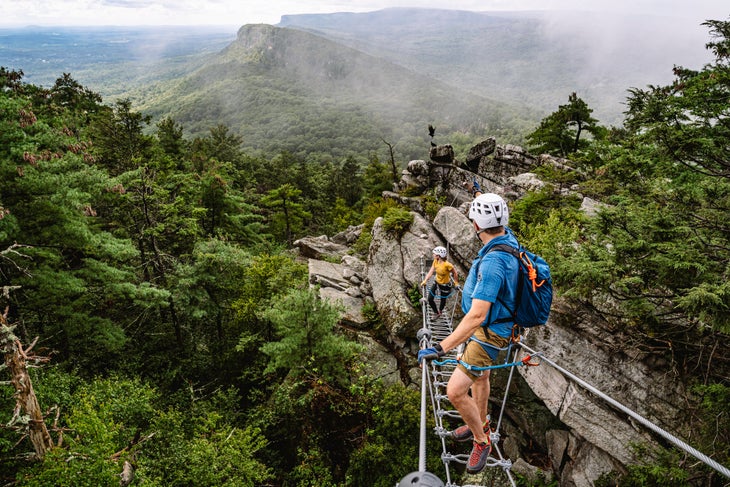
Know Before You Go
When I tackled my first via ferrata in Switzerland in 2012, I was physically fit, but I was living in Manhattan and had zero climbing knowledge or experience. I didn’t even know what a carabiner was at the time. My group’s guide didn’t provide an equipment or safety briefing. Luckily, the observant and climbing savvy man behind me noticed I was unclipping both carabiners at a time, which left me at serious risk of falling. He was kind enough to school me in via ferrata safety 101 without making me feel totally naive.
Last summer, I completed the Gold Mountain via ferrata in Ouray, a thrilling route that consists of 12 pitches and over 1,200 feet of vertical climbing. My experience was completely different. Logan Tyler, founder of Basecamp Ouray, designed the course and served as my group’s guide. He thoroughly briefed us on equipment and safety and suggested a few people in our group bypass particularly challenging pitches.
I won’t lie, my legs felt like Jell-O on pitch 11. The second longest suspension bridge in the U.S., it required me to walk 273-feet across a four-inch wide metal platform suspended nearly 200 feet in the air. But Tyler, who shared he’s walked the tight-rope-like bridge backwards coaching nervous clients, made me feel confidence rather than fear.
Going with a guide, particularly if you are a novice climber, is highly recommended, but that doesn’t mean you shouldn’t be vigilant and still ask questions. Ruttledge suggests asking companies what training they require for their guides.
The AMGA does not accredit via ferratas, but there are a lot of similarities between guiding in the mountains and guiding via ferratas, he says. “Your guides should also have rescue gear in case they need to haul you up on an overhanging section or if you are dangling in space,” he says.
And don’t be ashamed to straight-up ask if the route is appropriate for someone who has never rock climbed or is scared of climbing a ladder. It might not be. And that’s OK because there is a good starting point for you out there somewhere. Via ferratas are exhilarating, scary, and possibly transforming. There are few outdoor activities in the U.S. that when guided are as safe, and offer as many rewards, considers Haaland.
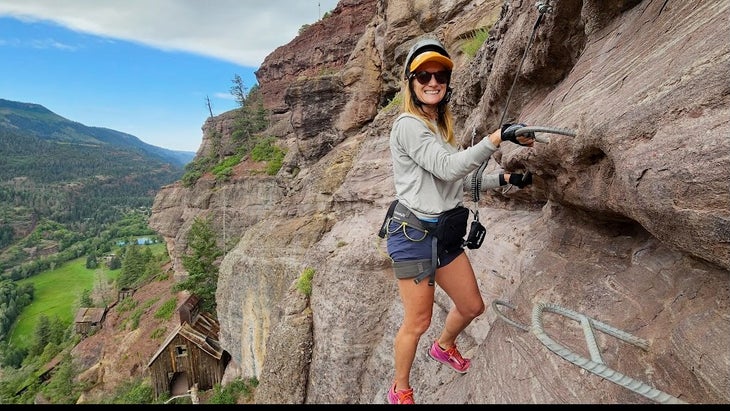
Jen Murphy is a regular Outside contributor and has completed three via ferratas.
The post Via Ferratas Are Booming in the U.S., But How Safe Are They? appeared first on Outside Online.

